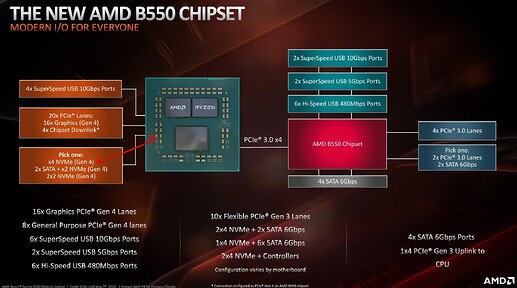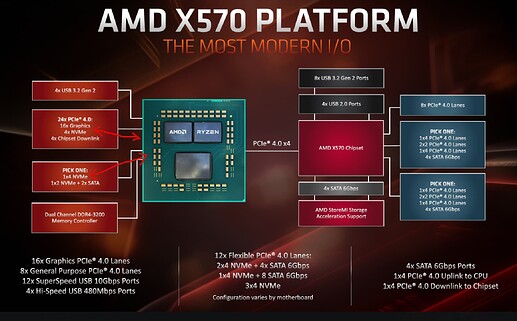My main workstation has a failing mainboard. The cost to replace it is far too high for a 5 year old setup so I am going be replacing the majority of it. Because of this, I have been researching what to replace it with.
I was reading tons of reviews on various boards from multiple manufacturers and kept seeing complaints about speeds of the m.2 slots when using certain slots. I started digging deeper and learned something interesting.
There are only 4 PCIe Gen4 lanes connecting the chipset to the CPU on the AM5 platform. That means that everything hanging off the chipset is sharing that bandwidth. That shared bandwidth will throttle a fast Gen4 nvme drive. To make matters worse, many of these boards have 3 M.2 slots hanging off the chipset. If those slots are used at the same time it will kill performance.
Normally, when something is sharing bandwidth this is disclosed in the documentation. i.e. PCIe_4 shares bandwidth with Sata 1+2 so those ports will be disabled when it is in use. However, in this case, since it is a chipset limitation, it isn’t disclosed in any meaningful way.
I guess there a few learnings here:
- If you have a fast nvme Gen4 drive, ensure it is connected to an M.2 slot that is connected to the CPU. Unfortunately, in most AM5 boards this is only the Gen5 slot.
- If you are planning to use multiple fast nvme drives consider the boards topology.
- You may need to look into hanging your nvme drives off a card in a PCIe slot. However, this opens a whole separate can of worms.


